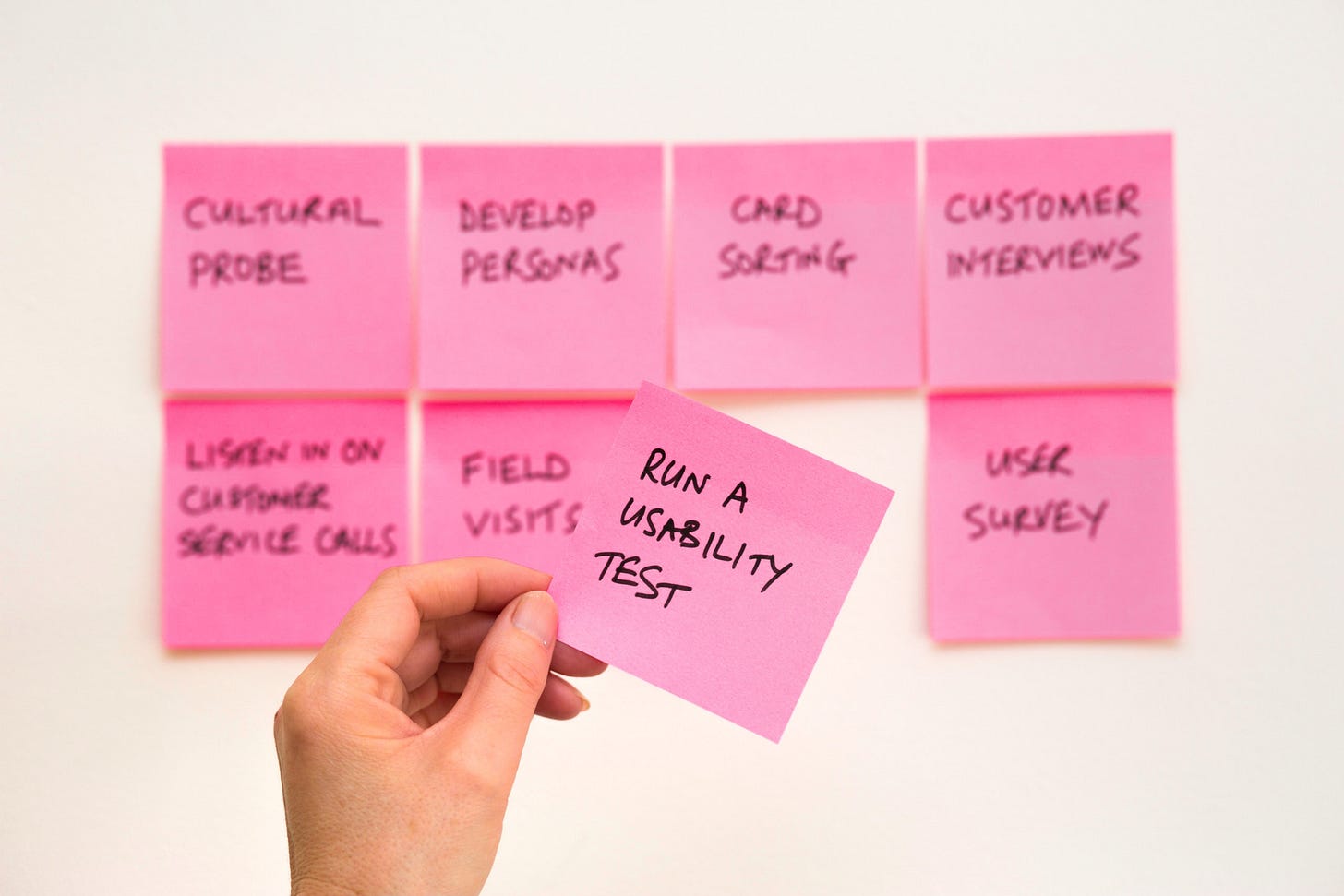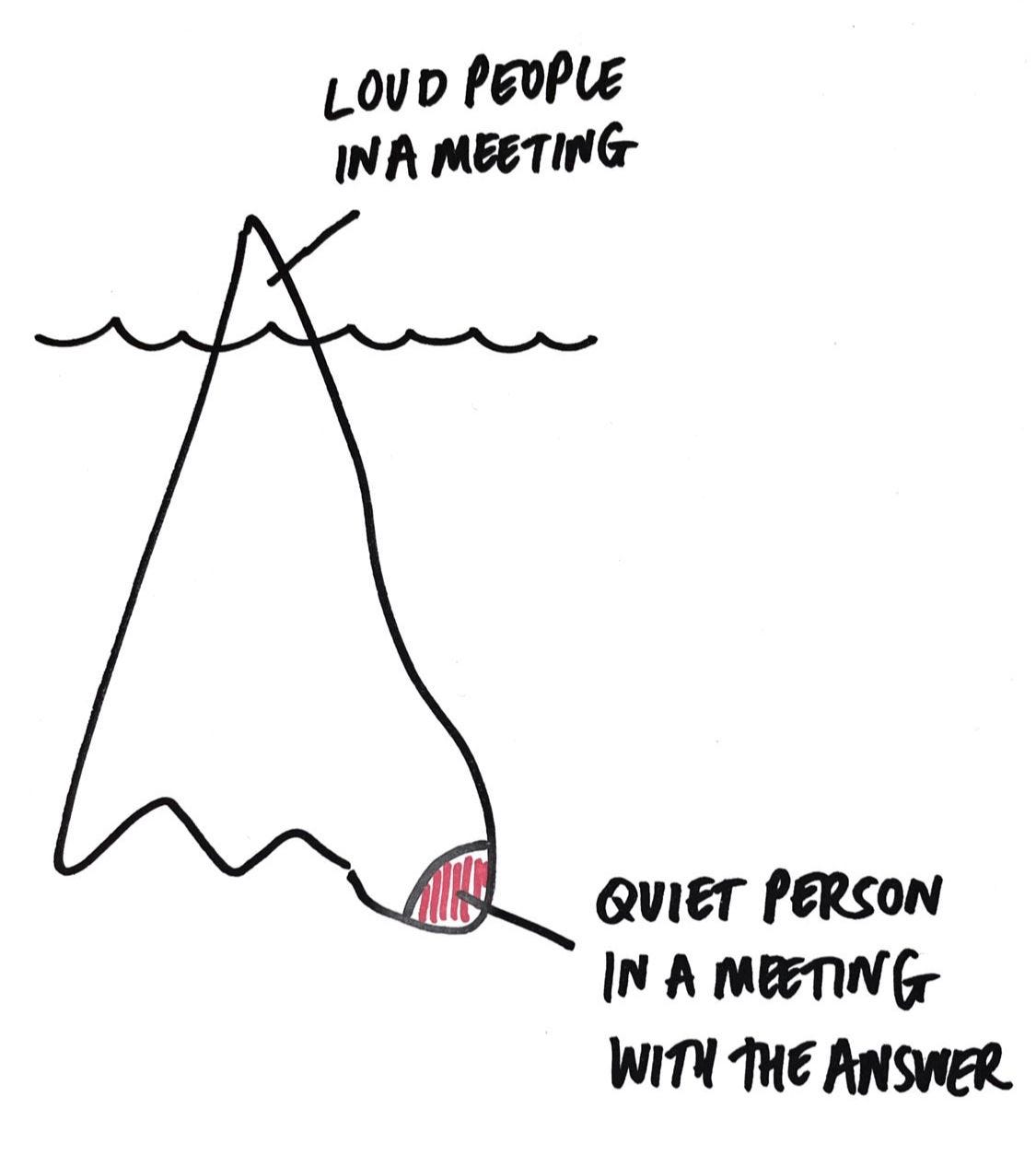Why generating and using design research has been vital to my practice.
The argument to adding data to opinions.
This is part 3 of a mini-series of blog posts on my most important design tools. You can read about workshops here and prototypes here.
Research can be a great and simple divider when evaluating a design process. There’s design with research and design without research. This was certainly the case for my practice. I used to attempt to develop solutions for my clients without much if any research and my work suffered for it. I was first exposed to the power of design research when learning the design sprint process. The design sprint of course only offers a minute sample size of what is possible with quality research and fortunately my current team genuinely and deeply values research. Research in fact is often our core deliverable where processes like the design sprint are built on the research we’ve done.
None of what I am writing here is to undervalue or disregard the instincts and experiences designers bring to the table. I believe great solutions are created when great research is combined with the great principles and process that a designer brings to the table.
That being said my practiced has improved considerably ever since I have committed on discovering ways to mitigate (not eliminate) subjectivity within the decisions that need to be made. Research allows us to both find and stay focused on the problems we are trying to solve and it allows us to build our opinions around data rather than on just our taste alone.
There are 2 relatively easy ways to get started with design research:
User interviews - To me design research starts and ends with talking to people and finding out what they’re problems are and even learning from them potential ways we can solve those problems. I’m probably angering the design gods when I write this here but I also lump usability testing and prototype testing into user interviews.
Surveys - This is the easiest way for me to capture some level of quantitative data that coincides with whatever I’ve learned from user interviews. Stakeholders like things like surveys because they have numbers. I have nothing against numbers but something like a survey should always support your user interviews and not replace them.
In short you want to get a good mix of qualitative (language based data) and quantitative (number based data) to form and validate/invalidate your assumptions, insights, and solutions.
There’s tons of different methods, tools, and practices you can learn when it comes to research. This is is one of many good reasons why design research can (and probably should be) a separate practice from design.
However you can get started with design research today. Start with talking to the people you want to serve and learn how you might be able to help them.
My favorite things of the week
This is a great blog post by Harmonic design that perfectly describes almost all the reasons I have become deeply interested in service design.
Book of the week - The Pathless Path by Paul Millred. Many folks that I respect, admire, and look up to were recommending this book to me and so far it has not disappointed. I haven’t finished it yet but I can say even now that this book has already changed the way I see life and work.
An inspring quote:
Coming together is a beginning, keeping together is progress, working together is a success.” - Henry Ford
I found this quote within the book The New Designer by Manuel LimaJuan Ramirez, a design leader at Netflix, posts a ton of content that resonates with me on LinkedIn but this post in particular hit me right in the feels as I feel that I have always been someone that struggles with visual design but still loves and values visual design.
This image shared by Greg McKeown visually summarizes perfectly a huge reason why I love workshops and design collaboration. I love giving everyone person in the room a chance to be heard.


